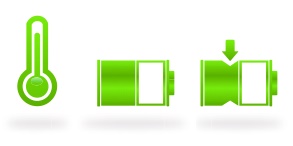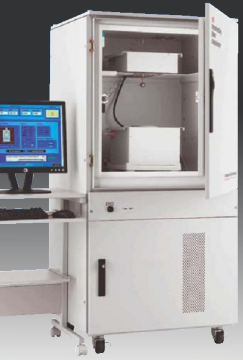The Trend of Battery Quality & Safety Test
Green energy industry is one of most popular industry in the world. The related researches and developments covers solar power, wind power, LED lighting, fuel cells, hybrid cars, new materials in thermoelectric and illumination, and so on. For consumer products, batteries, which is the most important energy storage device. The common rechargeable batteries include lead-acid battery (Lead-acid), nickel-cadmium batteries (NiCd), and nickel metal hydride batteries (NiMH), lithium ion battery (Li-ion), lithium-ion polymer battery (Li-Poly) and many others. However, these products are used in a variety of different environments, and makes rechargeable batteries are likely to be operating in harsh environments. Or to be operated with accidents, such as falling, shock, or even causes short circuit when the batteries is put together with the conductor, such as key, hairpins and other conductive materials. Besides, because of poor quality or human improper operation and caused combustion, explosion accidents, it became common in the news reports and scared the publics. Today, in addition to these consumer products, electric vehicles, motor vehicles, airplane, aircraft, etc. require larger battery for energy storage. These products often equipped with more advanced batteries, in order to store more energy. How to develop higher performance battery, and consider the best conditions for security reasons? It is focused and acted by scientists.
To these potential risks, governments have formulated relevant laws and regulations to regulate the design and production of qualified battery products, and early detection of any potentially dangerous. The current popular national standards and regulations and are:
Global CB: IEC 62133: 2002; transport of dangerous goods Test Standards Manual UN 38.3 (UNDOT)
America UL: UL 1642 (battery cell) UL 2054 (battery pack), UL 2580 (Electric Vehicle), SAE J2464 J2929 (Electric and Hybrid Vehicle)
EU CE: EN 62133: 2003
Japan PSE: DENAN Ordinance Article 1, Appendix 9; IEC 62133: 2002; JIS C8712: 2006; JIS C8714: 2007
Korea KC: Self-Regulatory Safety Confirmation, Annex 05
Australian C-Tick: AS / NZS CISPR 22: 2009
Thailand TISI: TIS 2217-2548
Brazil ANATEL: IEC 61960 (performance test); IEC 62133 (safety test)
South Africa SABS COC: CISPR 22 Class B; CISPR 24, IEC; 61000-3-2, IEC; 61000-3-3
Saudi-Arabia SASO: IEC 60950-1: 2005; SASO 2204; SASO 2203; SASP 573; SASO 182; SASO 1062
IEC/EN 62133 is widely referred by many countries in their standards and laws, because the battery cell and battery packaging test are included. And it defines the standards for quality inspection in battery production, and the possible situations that may occur during transporting, or misuse by users. IEC/EN 62133 define the major test items as follows:
Intended Use
Continuous Low Rate Charge, Vibration, Modeled Case Stress, Temperature Cycling
Reasonably Foreseeable Misuse
Incorrect installation, External Short Circuit, Free Fall, Mechanical Shock, Thermal Abuse, Cell Crushing, Low Press, Overcharge, Forced Discharge, Cell Protection.

Battery Safety Test
However, even in these regulations and testing, accidents happened occasionally there. For manufacturers, accidents typically equals to huge liability. So how to control a good performance and safety in the development phase for new battery technologies, can establish rigorous testing and inspection system, in order to ensure battery performance, quality, and safety. For researchers, developers, manufacturers, assembly plants, a reliable instrument is imperative to invest.
ACTTR Technology is a professional thermal analyzer instruments agents, we provide users the best quality products with diversiform, multi-functional solutions for various applications. In the field of battery safety test and performance test, we introduced the famous British battery analyzer instrument manufacturers, Thermal Hazard Technology (THT) and brought to you the best quality product, Accelerating Rate Calorimeter, ARC.
The Accelerating Rate Calorimeter was devised by the Dow Chemical Company in the 1970’s and was commercialized in 1980. This technology was developed to simulate exothermic runaway reactions from hazardous and reactive chemicals safely in the laboratory. For such a simulation an Adiabatic Calorimeter is appropriate and ARC technology embodies the best adiabatic control.

ARC Accelerating Rate Calorimeter of THT, UK
In operation, the calorimeter temperature is controlled to always track or follow the sample temperature. Therefore as a sample self-heats and its temperature rises, so does the calorimeter temperature. Worst Case evaluation is made and a Real Life Scenario simulated. Pressure can also be measured and the THT calorimeters can take very large batteries. In addition, the ARC will operate in isothermal mode with exceptional sensitivity and stability.
The unique dynamic range allows for detection and measurement of very small heat release as well as the ability to quantify runaway explosive decompositions. These operating conditions are also important for battery work. Uniquely the ARC has robustness and ruggedness to withstand damage should an explosive reaction occur and thus THT systems are designed to be safe in such circumstances.
After the explosion accident of Samsung Galaxy Note 7, people are asking, "Beside Regulatory Tests, What Else We Can Do?"


